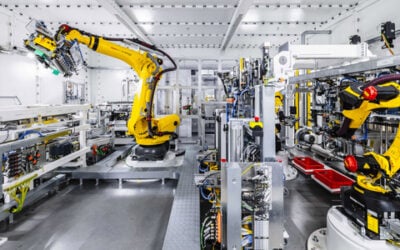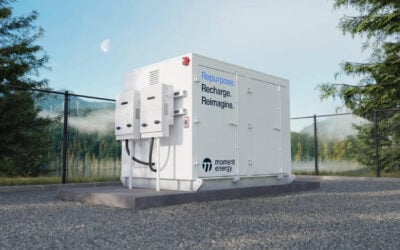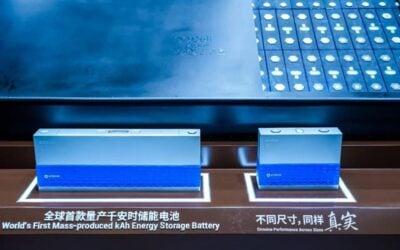
Recommendations for how the US can double its lithium battery revenues have been published by Li-Bridge, a collaborative “public-private alliance” put together through the Department of Energy (DOE).
By 2030, revenues from the industry could total US$33 billion and employ 100,000 workers domestically, according to a new report from the initiative. The report sets out an action plan, offering 26 recommendations.
Enjoy 12 months of exclusive analysis
- Regular insight and analysis of the industry’s biggest developments
- In-depth interviews with the industry’s leading figures
- Annual digital subscription to the PV Tech Power journal
- Discounts on Solar Media’s portfolio of events, in-person and virtual
Li-Bridge is led by the US Department of Energy (DOE), managed by Argonne National Laboratory and supported by the other national labs in its network of 17 across the country.
The effort “basically brings together hundreds of companies across the US in the battery supply chain space, with government, and the national labs are supporting that,” Noel Bakhtian, director of the energy storage department at Lawrence Berkeley National Laboratory, told Energy-Storage.news in an interview last year.
“The thought is that this is a public-private partnership that both parties will come in with actions and be supporting each other and be stronger together, than the sum of their parts.”
The new report, ‘Building a resilient and robust US lithium battery supply chain,’ is the result of the programme’s first year or so of work, and more than 40 companies contributed to it, spanning areas from automotive and advanced battery companies, to mining and chemicals, as well as the electric utility sectors.
Asia – mainly China – is the big international player in the lithium battery industry today, and Europe is working over the past few years to establish its own ecosystem based around large-scale gigafactory production.
The US will not be able to establish self-sufficiency in its battery supply chain by 2030, but it can capture 60% of the economic value created by rising domestic demand for the devices, according to Li-Bridge.
That demand for battery cells is projected to equal about US$55 billion per year by the end of this decade, according to analysis by Boston Consulting Group, which was appointed to put together the flagship report.
Without solid action of the type recommended, less than 30% of that value would be captured within the US. Meanwhile, US national and economic security would also be under “serious threats” if the country continues to lack a battery supply chain of it own.
“Although we are starting to see activity in the domestic battery manufacturing sector thanks in large part to the Bipartisan Infrastructure Law and the Inflation Reduction Act (IRA), US industry is still ten to 20 years behind Asia, and about five years behind Europe, in commercialising manufacturing of this critical technology,” James Greenblatt, executive director of NAATBatt International, one of three trade organisations involved in the initiative’s leadership, said.
The Li-Bridge initiative is complementary to various other policy measures taken by the Biden-Harris Administration, such as the CHIPS Act on semiconductor manufacturing. President Biden and other key government figures like Secretary of Energy Jennifer Granholm have long been vocal on the need to develop domestic lithium battery capabilities.
It is closely aligned with the Federal Consortium for Advanced Batteries (FCAB), which brought together four US federal government departments with a shared interest in fostering the battery industry. Its formation in fact pre-dates the Biden presidency by a few months, having formed in late 2020.
Li-Bridge report’s recommendations
Chief among the report’s recommendations are that a buying consortium for raw energy materials should be established, along with shared pilot lines for new battery technologies and their commercialisation, major investment into training the necessary workforce, and reform of permitting processes.
The recommendations follow five overarching objectives, which are, as follows, taken directly from the 19-page report:
- Objective 1: Improve investment attractiveness of U.S.-based lithium battery technology and material production through expanded and better designed supply- and demand-side incentives
- Objective 2: Support research, enable product and business model innovation, and accelerate pathways to commercialisation through investments in R&D and validation & scaling capabilities
- Objective 3: Help U.S. companies secure access to critical minerals, energy material supplies (virgin and recycled, domestic-and foreign-sourced) and low-carbon infrastructure
- Objective 4: Address know-how gaps by investing in workforce training
- Objective 5: Establish an enduring US public-private partnership to support the development of a robust and sustainable lithium battery supply chain in North America
Li-Bridge estimated that following through with the recommended plan of action could result in around US$17 billion of economic benefits and directly create 40,000 jobs.
The full report can be found here (PDF).
Energy-Storage.news’ publisher Solar Media will host the 5th Energy Storage Summit USA, 28-29 March 2023 in Austin, Texas. Featuring a packed programme of panels, presentations and fireside chats from industry leaders focusing on accelerating the market for energy storage across the country. For more information, go to the website.






